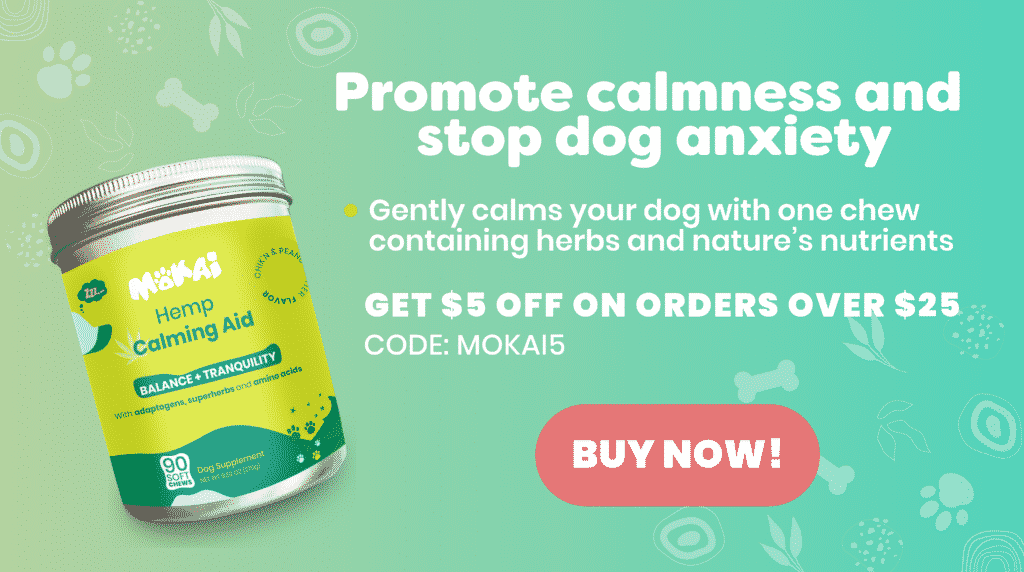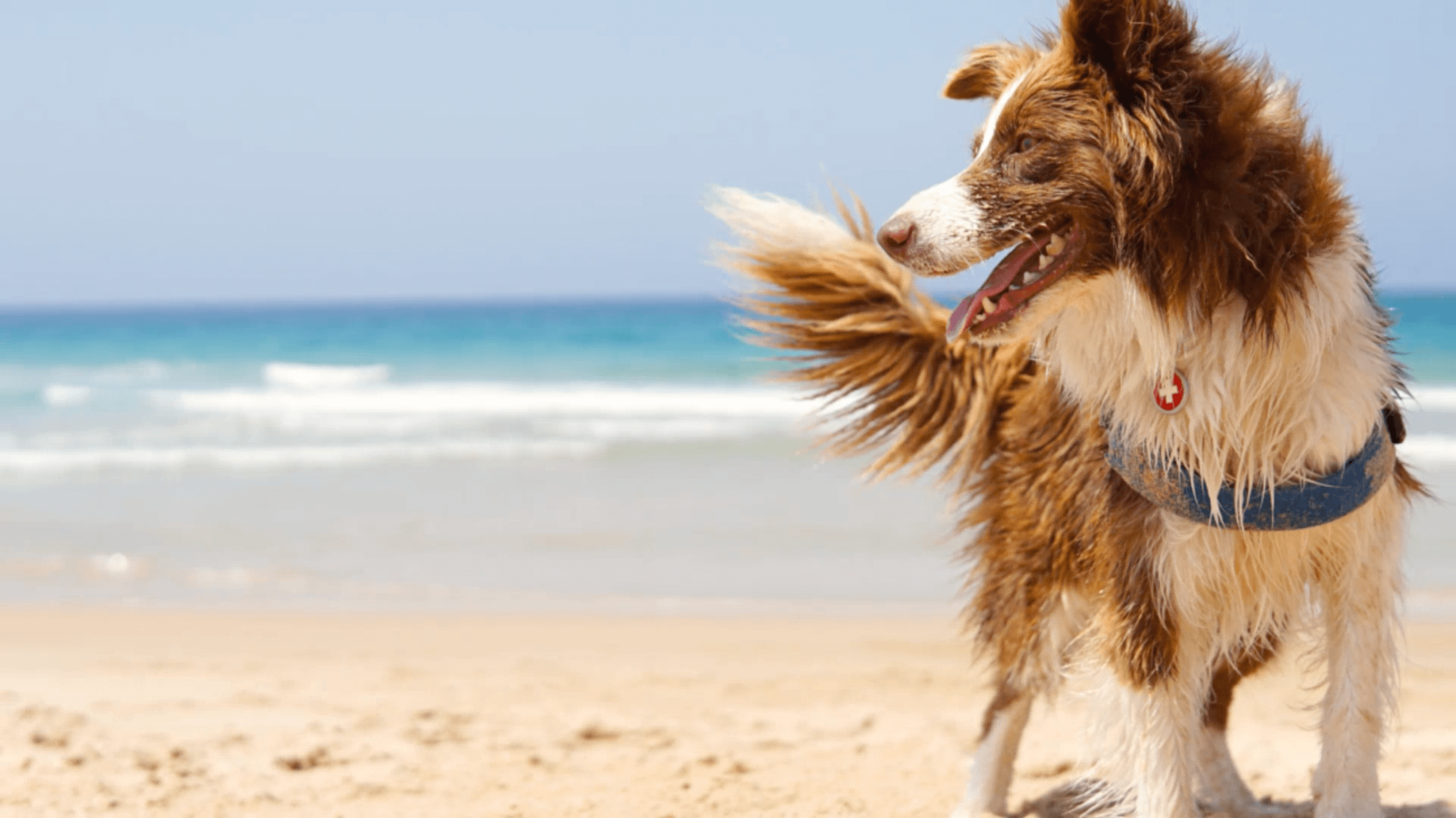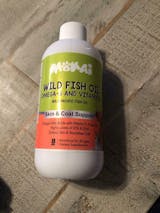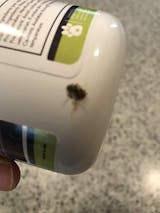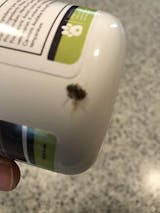Watching our dogs suffer from anxiety and not knowing what to do about it is heartbreaking. You probably want to help your pup out desperately, but if you don’t know what you are doing, chances are you will make anxiety worse.
Dog anxiety is a very common condition, so as pet parents, it’s very important to get acquainted with its symptoms, signs, causes, and treatments.
Keep reading to the end of the article for a sweet treat!
How to tell if your dog is suffering from anxiety
First of all, what is dog anxiety?
First and most importantly, we need to learn about anxiety. Stress and anxiety (two sides of the same coin) are normal and healthy emotions our dogs experience. They are super important since they help dogs respond to danger and they motivate and stimulate action. The problem occurs when these emotions start taking over dogs’ lives and become a regular thing. This is the exact moment when anxiety turns into a negative condition.
What causes dog anxiety?
There are some situations that can trigger dogs’ anxiety.
- Being left alone: Some dogs can suffer from separation anxiety and get in an alert mood whenever their owners are about to leave.
- Former abandonment: Having been rescued from a shelter increases the possibility of suffering anxiety.
- Loud noises: Thunderstorms, fireworks, a striking siren, or any other loud noise can trigger our pups’ anxiety.
- Traveling: A change of scene can cause a dog to feel lost, and hence, anxious.
- Socialization: Some dogs experience anxiety whenever they see people or other dogs they are not familiar with for the first time.
- Illnesses: Some illnesses can cause sudden anxiety in dogs, like hypothyroidism, diabetes, and hearing or vision loss.
Signs of anxiety in dogs: what does it look like?
Dogs communicate and let us know how they feel through body language. Some of the common signs of anxiety in a dog can be:
- Barking or howling
- Urinating and defecating when they are left alone
- Biting and licking his paws/chewing his tail
- Digging
- Shivering
- Chewing any hard surface
- Running in circles
If your dog experiences at least 2 or 3 of the former signs, he probably suffers from anxiety.
What’s good for dog anxiety? Are there anxiety pills for dogs?
There are different levels of anxiety and not all of them require medication. However, the most severe forms of anxiety may require prescribed pills like selective serotonin reuptake inhibitors (SSRIs), which are antidepressants.
Can dogs take human anxiety pills?
There are some human meds that have been approved by the FDA, and hence they can be administrated to dogs, as it’s the case with Fluoxetine, Diazepam, Lorazepam, and Clomipramine, among others.
Take into account that these drugs are long-acting, so this means they should be administrated for several weeks or even months in order to reach their full effect.
However, you should never give your dog any pill without the previous indication of the vet. Take into account that dogs need different doses from humans, and they should be specially prescribed. So always consult with your vet before administrating your dog any human or dog medication. All dogs are different, and hence, their needs, health, and requirements.
3 Tips to help dog anxiety
If your dog’s case doesn’t require medication, then there are different things you can do to help your dog with anxiety.

-
Calming support: Our Hemp Calming Treats helps reduce nervousness, hyperactivity, and anxiety while providing your pup with calmed and gentle behavior. In addition, hemp calming treats are completely safe for dogs.
-
Toys/Brain games: Puzzles, Kong, Which hand, to name a few. There are many different games you can encourage your pup to play in order to stay engaged and focused for long periods of time. You can read more in our blog 5 brain games for dogs.
- Anxiety vests: These are pressure wraps you can use to literally apply pressure to your dog. For instance, when your dog is about to be home alone, and you know a thunderstorm is coming, you can put the vest on to create a calming effect.
Will dog separation anxiety go away?
Yes, separation anxiety is a treatable condition, so it can go away. However, it can take several weeks or even months until it fully disappears. If you want to help your pup, there are a few things you can do to make anxiety better.
How to treat separation anxiety in dogs:
-
Leave your pup a chewable toy: It will work both as a security blanket, and as an anxiety releaser. Chewing his toy will help him get rid of the tension and nervousness that anxiety brings.
-
Don’t make a fuss when you leave: If every time you leave, you say goodbye to your pup in a sad voice, you extra pet him, and promise you’ll be back soon, your pup will identify leaving with negative emotions. As hard as it is, you should try to ignore him.
-
Practice leaving and coming back immediately: This is a trick many trainers recommend. Grab your things as if you were about to leave, and return within 5 minutes. Repeat this action several times a day, but spacing out the time until you come back. This will reinforce the idea that you are coming back sooner than expected, and there is nothing to worry about.
- Don’t punish him: Punishments are never part of a training session. Yelling at your dog because he urinated inside the house, or because he tore something apart will change absolutely nothing. Your dog doesn’t understand why you are scolding him.
Anxiety-related behaviors
Itchiness and burning
When our dogs experience anxiety, naturally, their bodies’ stress response affects the nervous system and can cause sensorial body symptoms like itching, or burning, and thus, it can generate excessive scratching. Don’t panic: This is a normal symptom of anxiety and it will go away once your dog is calmed.
Aggression
Dogs who suffer from severe anxiety can eventually develop aggressive behavior at the peak of their anxiety episode. This is the most dangerous sign of anxiety, and it only occurs when its levels are super high. If your dog is experiencing aggression, you should always consult your vet to rule out any other condition and assess appropriate treatment.
How to calm dog anxiety naturally: do Calming Dog Treats work?

Luckily, there are different ways to relax a dog who suffers from anxiety in a natural way.
-
Long walks/exercise: An exhausted dog has no energy left for anxiety. Make sure your dog can release all his anxiety through long walks, running, or jumping. Exercise will not only help his anxiety, but also his overall health.
-
Music: Put on some chill music and try to help your dog relax. For instance, during new year’s eve, which is one of the nights with more fireworks. It’s important for you to know that in order to help your pup, you should be relaxed as well.
-
Massages/physical contact: Yes, just like it happens with babies, physical contact can make a huge difference in your dog’s anxiety. A cuddle sesh + belly rubs and massages = chilled pup.
-
Natural calming support: Mokai’s Hemp Calming Treats will alleviate your pup’s uneasiness during any stressful situation, and will reduce his anxiety and hyperactivity.
- Grooming session: If your dog enjoys bath time, and he is always looking forward to it, a grooming session can be a true ally in calming your pup throughout an anxiety episode. Bear in mind that if your dog dreads water, this technique is not the right fit for him.
How to ease dog anxiety on walks
Living with a dog who suffers from anxiety can sometimes be difficult to manage. Thunderstorms, fireworks, and loud noises are some of the triggers a dog has to face, but luckily, they don’t occur on a daily basis. However, there is an anxiety trigger that dogs and owners have to face every single day, and at least twice: walks.
Walking with a dog who suffers from anxiety
If your dog suffers from anxiety, walks can be hard to master. For an anxious dog, going out to an open space where there are different stimuli like noises, lights, and unknown dogs and people, can be a little overwhelming.
How do I know if my dog is suffering from anxiety on walks?
If during walks, your pup…

- Walks in zig-zag, and goes back and forward for no apparent reason
- Doesn’t pay attention or follow your orders
- Barks incessantly
- Trembles
- Pulls his leash to come back home
In order for your dog to experience walks in the best possible way, we prepared a list of things you should do when you walk a dog who suffers from anxiety:
-
Get acquainted with your dog’s anxiety triggers: All dogs are different, and so are their anxiety triggers. Knowing your dog is the best way to provide him with a calm anxiety-free walk.
-
Choose a route that won’t trigger him: As we’ve just mentioned, there are triggers that can make our dogs feel overstimulated and hence, more anxious. Try to avoid routes where there are many people, cars, dogs, noise, etc. If needed, choose the same route over and over again, so your pup will be familiarized with it.
Did you know that more than 70% of dogs suffer from at least one form of anxiety?
-
Keep your pup on a short leash: Dogs who suffer from anxiety tend to run away as a stress response, so it’s important for you to have full control of him. Besides, if there’s a possible trigger approaching (e.g., other dogs or people) you both can rapidly move forward.
-
Take his favorite treats with him: You don’t know when you will need extra help to catch your pup’s attention, so you should be ready, just in case (you can use peanut butter to lick since licking can reduce stress and anxiety). However, you should never use treats to get your dog to do something that scares him off! You may even worsen his anxiety disorder.
- Don’t scold him: When a dog is anxious or scared, he is not doing anything on purpose. If he gets anxious and you yell at him, he will get twice as anxious. While walking him, it’s important you remain calm, and let your pup know everything is okay by using a cheerful jolly, and confident voice.
Statistics of dogs suffering from anxiety

A recent study conducted by Milla Salonen (postdoctoral researcher) and other specialists has shown that 72,5% of dogs suffer from at least one form of the following categories of anxiety: general fear, noise sensitivity, impulsivity or lack of attention, aggression, fear of surfaces, compulsive behaviors, and separation anxiety. This study also concluded that males are more likely to display aggression and females are more likely to show fear.
Can dog anxiety be cured?
There is no straight answer to this question. There are some cases in which dog anxiety can be cured, but there are other cases in which it can only get slightly better. The answer involves many factors, such as age, health condition, anxiety level, etc. You can try all the natural remedies for anxiety, but if they are not working, you should contact a specialist to evaluate your dogs’ particular situation and needs.


